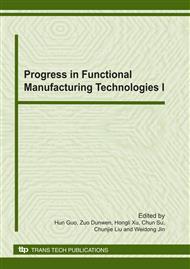p.200
p.206
p.212
p.218
p.224
p.231
p.237
p.246
p.252
Study on Flow Resistance and Filtration Efficiency of the Carbonized Micron Wood Fiber DPF
Abstract:
Airborne particulate matter is known for its environmental impact and is suspected of causing adverse health effects. Especially the role of ultrafine particles smaller than 0.1μm, which amongst others are emitted by diesel engines, is the subject of current health related discussions. In order to solve this problem, many filtration methods have been researched, while so far the results are unsatisfactory. In this paper, a method of utilizing the carbonized micron wood fiber (CMWF) as the filter material is presented and a corresponding numerical simulation method is applied. Furthermore, a kind of detachable DPF is developed, a diesel engine bench test is conducted and the influence elements upon Δp/H are researched. Theory and test prove that the numerical simulation method can be consistent with the test very well and the CMWF DPF has not only the low flow resistance and high efficient filtration but also very suitable for diesel exhaust gas purification.
Info:
Periodical:
Pages:
224-230
Citation:
Online since:
December 2010
Authors:
Price:
Сopyright:
© 2011 Trans Tech Publications Ltd. All Rights Reserved
Share:
Citation:


